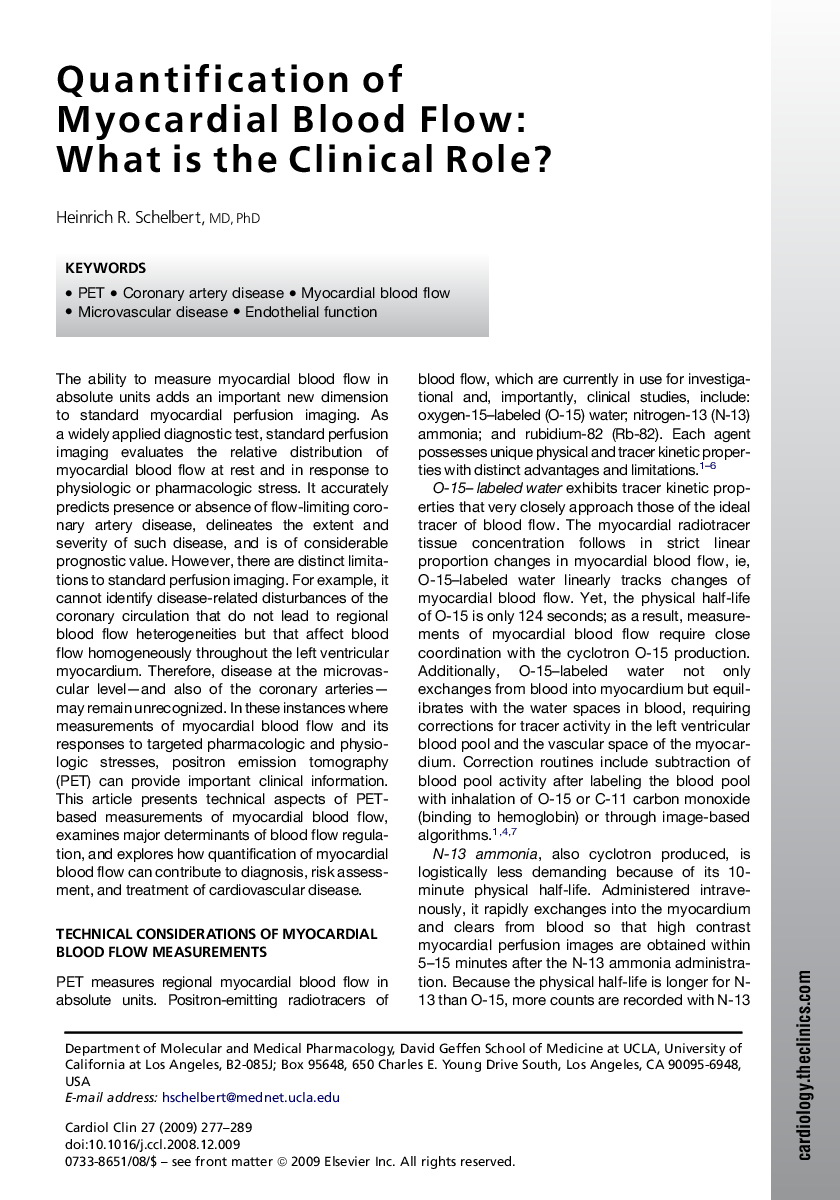| Article ID | Journal | Published Year | Pages | File Type |
|---|---|---|---|---|
| 2898316 | Cardiology Clinics | 2009 | 13 Pages |
Abstract
Quantification of regional myocardial blood flow and of its responses to targeted physiologic and pharmacologic interventions, which is now available with positron emitting tracers of blood flow and positron emission tomography (PET), extends the diagnostic potential of standard myocardial perfusion imaging. These noninvasive flow measurements serve as tools for quantifying functional consequences of epicardial coronary artery disease, as well as of impairments in microcirculatory reactivity that escape detection by standard perfusion imaging. Flow measurements are clinically useful for more comprehensively assessing the extent and severity of coronary vascular disease or impairments in microcirculatory function in noncoronary cardiac disease. Flow estimates in these disorders contain independent or unique prognostic information about future major cardiac events. Flow measurements are also useful for assessing the coronary risk, for predicting long-term cardiovascular events, and for monitoring the effectiveness of risk reduction strategies.
Related Topics
Health Sciences
Medicine and Dentistry
Cardiology and Cardiovascular Medicine
Authors
Heinrich R. MD, PhD,
